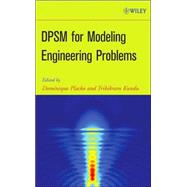
Note: Supplemental materials are not guaranteed with Rental or Used book purchases.
Purchase Benefits
What is included with this book?
Tribikram Kundu, PhD, is a Professor at the University of Arizona and winner of the Humboldt Research Prize from Germany. He has been an invited professor in France, Sweden, Denmark, Russia, and Switzerland. He is the editor of twelve books and three research monographs and author/coauthor of two textbooks and over 200 scientific papers, three of which received Best Paper awards.
| Basic Theory of Distributed Point Source Method (DPSM) and its Application to Some Simple Problems | |
| Introduction and Historical Development of DPSM | |
| Basic Principles of DPSM Modeling | |
| The fundamental idea | |
| Basic equations | |
| Boundary conditions | |
| Example in the case of a magnetic open core sensor | |
| Governing equations and solution | |
| Solution of coupling equations | |
| Results and discussion | |
| Examples from Ultrasonic Transducer Modeling | |
| Justification of modeling a finite plane source by a distribution of point sources | |
| Planar piston transducer in a fluid | |
| Conventional surface integral technique | |
| Alternative distributed point source method (DPSM) for computing the ultrasonic field | |
| Matrix formulation | |
| Restrictions on rS for point source distribution | |
| Focused transducer in a homogeneous fluid | |
| Ultrasonic field in a non-homogeneous fluid in presence of an interface | |
| Pressure field computation in fluid 1 at point P | |
| Pressure field computation in fluid 2 at point Q | |
| DPSM technique for ultrasonic field modeling in non-homogeneous fluid | |
| Field computation in fluid | |
| Approximations in computing the field | |
| Field in fluid | |
| Ultrasonic field in presence of a scatterer | |
| Numerical results | |
| Ultrasonic field in a homogeneous fluid | |
| Ultrasonic field in a non-homogeneous fluid - DPSM technique | |
| Ultrasonic field in a non-homogeneous fluid - surface integral method | |
| Ultrasonic field in presence of a finite size scatterer | |
| References | |
| Advanced Theory of DPSM - Modeling Multi-Layered Medium and Inclusions of Arbitrary Shape | |
| Introduction | |
| Theory of Multi-Layered Medium Modeling | |
| Transducer faces not coinciding with any interface | |
| Source strength determination from boundary and interface conditions | |
| Transducer faces coinciding with the interface | |
| Transducer faces modeled separately | |
| Source strength determination from interface and boundary conditions | |
| Counting number of equations and number of unknowns | |
| Transducer faces coinciding with the interface | |
| Transducer faces are part of the interface | |
| Source strength determination from interface and boundary conditions | |
| Special case involving one interface and one transducer only | |
| Theory for Multi-layered Medium Considering the Interaction Effect on the Transducer Surface | |
| Source strength determination from interface conditions | |
| Counting number of equations and number of unknowns | |
| Interference between two Transducers: Step-by-Step Analysis of Multiple Reflection | |
| Scattering by an Inclusion of Arbitrary Shape | |
| Scattering by an Inclusion of Arbitrary Shape - An Alternative Approach | |
| Electric Field in a Multi-Layered Medium | |
| Ultrasonic Field in a Multi-Layered Fluid Medium | |
| Ultrasonic field developed in a three-layered medium | |
| Ultrasonic field developed in a four-layered fluid medium | |
| References | |
| Ultrasonic Modeling in Fluid Media | |
| Introduction | |
| Primary and Secondary Sources | |
| Modeling Ultrasonic Transducers of Finite Dimension Immersed in a Homogeneous Fluid | |
| Numerical results - ultrasonic transducers of finite dimens | |
| Table of Contents provided by Publisher. All Rights Reserved. |
The New copy of this book will include any supplemental materials advertised. Please check the title of the book to determine if it should include any access cards, study guides, lab manuals, CDs, etc.
The Used, Rental and eBook copies of this book are not guaranteed to include any supplemental materials. Typically, only the book itself is included. This is true even if the title states it includes any access cards, study guides, lab manuals, CDs, etc.